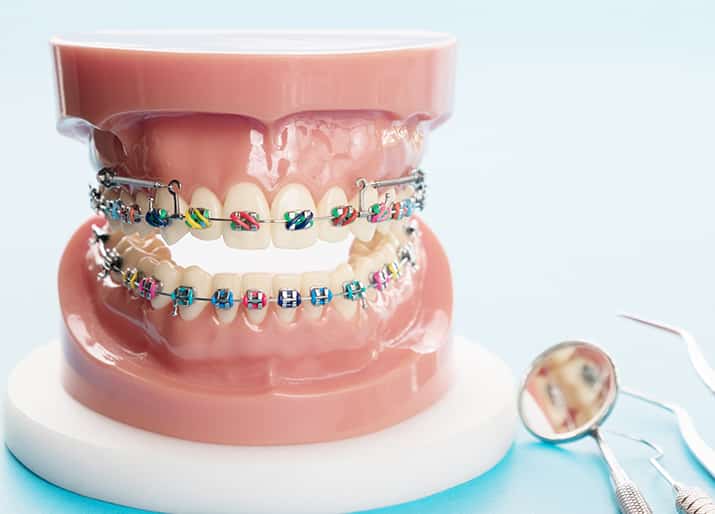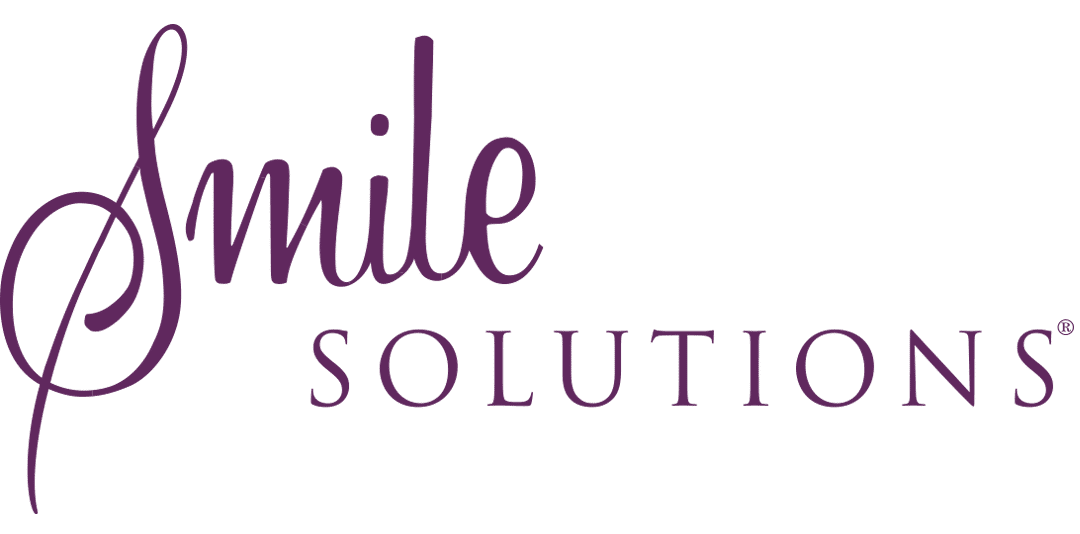Braces are an orthodontic treatment used to correct the position of teeth and improve the patient’s occlusion (bite).

Traditional Braces

Traditional or conventional braces conventional braces consist of two parts: a series of either metal or clear brackets that are attached to each tooth, and an arch wire that runs through slots in the brackets. When tensioned, the wire slowly moves the teeth into the desired position.
At Smile Solutions we use Empower braces in both stainless steel and clear. Empower braces differ from standard braces in that the brackets used to keep the arch wire in place do not require elastic module “ties”. This means that adjustment visits can be less time consuming and the braces themselves are more discreet, more comfortable and easier to keep clean. Having braces without elastic ties can reduce the amount of plaque that is usually attracted to the elastic, making dental hygiene easier during orthodontic treatment and resulting in fresher breath.

Clear Braces

Clear braces, also known as ceramic or porcelain braces, are made from a ceramic material to match your surrounding tooth colour. Just like traditional braces, the clear brackets are attached to each tooth with a clear arch wire that runs through the slots in the bracket to guide teeth into their new positions when tightened.
Clear braces work just as well as traditional metal braces but are more aesthetically pleasing. They are practically invisible from 2 to 3 metres away.
Empower braces in both stainless steel and porcelain are used at Smile Solutions. Empower often eliminates the need for elastic or metal module “ties” to hold the wire in place. Eliminating elastic ties can reduce the amount of plaque that is usually attracted to the braces, making it easier to maintain good dental hygiene throughout orthodontic treatment and resulting in fresher breath.
Frequently Asked Questions
Initially, it may take some time for your mouth to adapt to the feel of your braces and you may feel discomfort on your lips or cheeks.
Mouth soreness and ulcers are common when braces are first applied and can occur at any time throughout treatment. Orthodontic wax is the best way to resolve this issue. Dry the area and then smooth the wax over braces to provide relief.
Salt water mouth rinses may also be helpful, dissolve a teaspoon of salt in a glass of warm water and rinse 3-4 times per day.
When braces are first fitted and following each adjustment visit, your braces will feel tight, and this may make your teeth and gums feel a little tender. The tightness and tenderness mean your teeth are moving – and these sensations may last up to a week. During
this time, we recommend that you eat soft foods that do not require much chewing. Over-the-counter pain relief can also help, if required.
Excellent oral hygiene is crucial for anyone wearing braces. Please take particular care to keep the areas around your braces and gum line free from plaque. We recommend you use your toothbrush, along with Superfloss™ and Pixsters™, after snacks and meals. Superfloss™ has a stiffened end that can be threaded between your teeth and the wire, a spongy section to floss large spaces and smooth end for smaller ones. In addition, you can use Pikster™ inter-dental brushes to clean between your teeth and the arch wire. With bendable heads, these can easily reach around to your back teeth and will last up to two weeks when properly rinsed after each use.
If you are finding it hard to clean your teeth or notice that your gums seem puffy or bleed easily, we recommend more frequent visits to your dentist or hygienist for professional hygiene therapy.
Your orthodontist will care for your braces and make sure everything is going according to plan, while your general dentist will make sure your teeth stay healthy and clean. Now that you have your braces fitted, it is very important that you visit your general dentist every six months (or as advised by your dentist) for a check-up and a clean.
Damage to brackets and arch wires is often caused by eating particularly crunchy or sticky foods (please see overleaf for list of friendly & unfriendly foods). If a bracket or wire does become lose within the first few weeks of treatment, or as a result of damage, this can be repaired at your next appointment.
Poking wire: You can use tweezers to place the wire back into place. If doing this and using wax doesn’t help, clip the wire behind the last bracket with your nail clippers.
Broken bracket: A bracket is considered broken if it has come away from the tooth, spins, or moves up and down the wire. This is not an emergency and can be fixed at your next appointment. If the bracket on the back tooth comes loose, the wire will feel long. Try trimming the wire to make it more comfortable.
Broken Power Chain: If there is a tear in the power chain do not worry as the remainder of the elastic power chain is still active and it is not an emergency to have this repaired straight away. However, if you have an appointment currently to have your braces removed and the power chain has broken please call the practice.
Elastic Hook: If the hook (bracket) which helps connect your elastics has fallen, stop wearing elastics all together and inform your orthodontist at your next appointment.
Sports mouthguards may be worn over your braces, but frequent use is discouraged as it will hinder the desired movement of your teeth. Mouthguards that are suitable for use with braces and can be custom-made for you at Smile Solutions.
Meet our Specialist Orthodontists
At Smile Solutions your Invisalign treatment will be carried out by one of our registered specialist orthodontists, not a general dentist. Specialist orthodontists complete a postgraduate university degree specialising in tooth and jaw correction and these are the clinicians who will assess your suitability for Invisalign and perform your treatment. You can have complete confidence in the care you receive and the final outcome.




